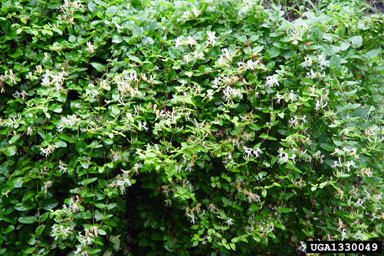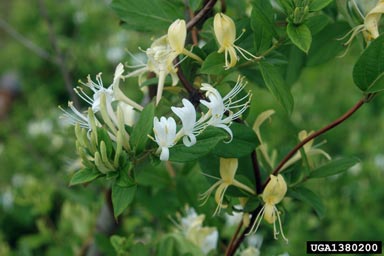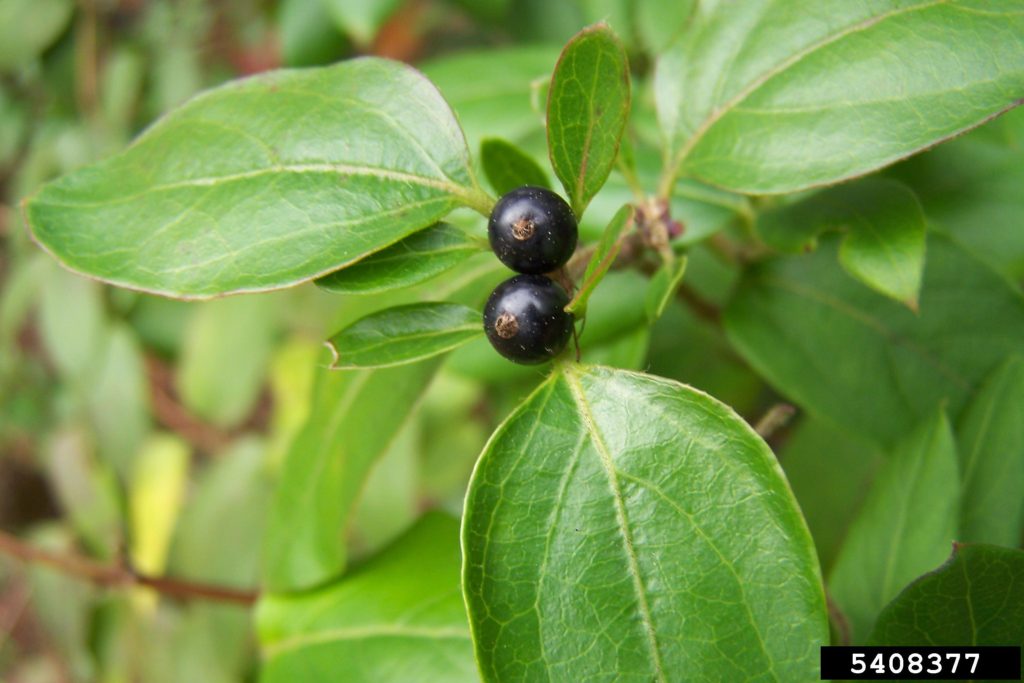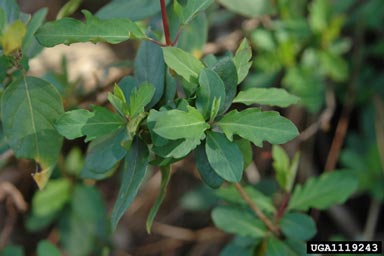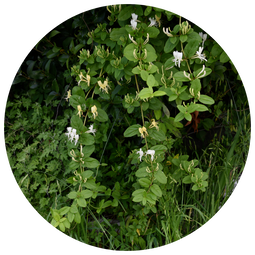|
Japanese Honeysuckle
Lonicera japonica Unlike its bush honeysuckle counterparts, Japanese honeysuckle is a large, twining vine which can reach lengths of 30 feet. It will create dense mats over the ground unless there is something nearby to climb, such as a tree or shrub. The plants that are climbed are subsequently choked-out as they lose access to resources - or they are girdled.
Introduced in the late nineteenth century for ornamental purposes, it is still available for sale in Michigan, although it is prohibited in some neighboring states. Many people found the showy, fragrant flowers appealing. Because of its ability to form a thick mat through rapid growth, it was also planted along steep embankments to prevent erosion. Like many invasive species, Japanese honeysuckle thrives in disturbed areas and will persist long enough to lessen an area's overall diversity. Photo credits: Karan Rawlins, University of Georgia, Bugwood.org | Wendy VanDyk Evans, Bugwood.org | Chris Evans, University of Illinois, Bugwood.org
Learn More About Japanese Honeysuckle:
|
Japanese Honeysuckle Facts
Management Options
|
|
Created by the Northwest Michigan Invasive Species Network
|
Go Beyond Beauty is funded by the Michigan Invasive Species Grant Program (MISGP)
|

